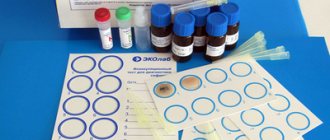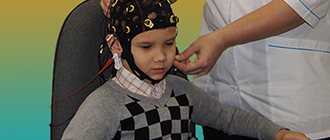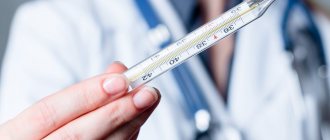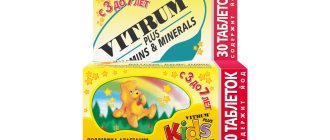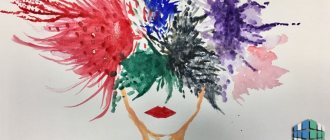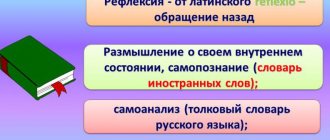10 minutes
674 views
A stroke is an acute disorder of cerebral circulation, leading to the destruction of brain tissue. Every year in Russia there are 450,000 cases of stroke - one every 1.5 minutes.
The causes of ischemic stroke can be atherosclerosis of cerebral vessels, coronary heart disease with cardiac arrhythmias, heart defects, osteochondrosis of the cervical spine, and arterial hypertension. With these diseases, obstruction or blockage of brain vessels develops, the blood supply to the brain is disrupted, which leads to bleeding of the brain - ischemia. If blood circulation in the ischemic area is not quickly restored, the brain tissue in it dies. The dead tissue then gradually dissolves to form cysts (holes) in the medulla.
The consequences of ischemic stroke are determined 90% by its severity and only 10% depend on treatment. Therefore, preventing stroke is many times more effective than treatment; Hippocrates said: “It is easier to prevent a disease than to treat it.”
Stroke prevention: simple rules for preventing stroke
Stroke and rehabilitation
Stroke is an acute disease that is associated with circulatory disorders and is manifested by such symptoms from the nervous system as:
- motor, speech, sensory, coordination, visual and other disorders;
- general cerebral disorders: changes in consciousness, headache, vomiting for more than 24 hours;
- death in a short period of time.
There are 2 main forms of stroke:
- ischemic (when some part of the brain stops receiving oxygen for various reasons, for example, blockage of the lumen of a vessel with a blood clot);
- hemorrhagic (when a vessel ruptures, blood permeates the brain tissue and non-traumatic damage or subarachnoid hemorrhage occurs).
Rehabilitation after a stroke begins as early as possible. An integrated approach to treatment combines drug therapy, physiotherapy, and training to restore lost functions. There are 3 main areas in pharmacotherapy:
- prevention of relapse, that is, repeated stroke. Typically, 1 in 10 people will have another stroke in the first year;
- treatment of individual symptoms;
- pathogenetic treatment.
Indications for therapeutic blockade
- pain in the neck, back;
- osteochondrosis;
- neuralgia, neuritis;
- pain in the spine due to intervertebral hernia;
- rheumatism;
- osteoarthritis;
- pain in the postoperative period;
- phantom pain;
- Minière's syndrome;
- neuropathy;
- spasticity;
- amputation pain;
- pain and spasticity after a stroke;
- radiculitis;
- migraine;
- sciatica;
- tunnel syndrome.
Prevention of recurrent stroke
The reasons that led to the occurrence of a stroke most often do not disappear anywhere and continue to affect a person. The risk of recurrent stroke depends on their strength and combinations. Prevention of recurrent stroke is called secondary. List of conditions that people pay attention to first:
- Arterial hypertension is the main risk factor for stroke. It increases his risk by 5 times;
- diabetes;
- smoking;
- coronary heart disease (the risk increases by 2-4 times);
- atrial fibrillation (increases the risk by 3-5 times);
- hyperlipidemia (high levels of “bad” cholesterol);
- thrombocytosis;
- overweight.
Accordingly, it is necessary to correct these conditions and bring them back to normal to reduce the risk of recurrent stroke. Drug therapy is only part of the treatment. Diet, exercise, and giving up bad habits are important.
Antihypertensive drugs
It is recommended to reduce blood pressure, even if it is raised very slightly or within the normal range: “upper” 120-139 mmHg, “lower” 80-89 mmHg. So a decrease of 5 mmHg. helps reduce the development of stroke by 30%.
Diet, exercise, and giving up bad habits are important in preventing a recurrent stroke.
The superiority of some groups of antihypertensive drugs over others has not been proven. When prescribing, the doctor has to take into account the individual characteristics of the patient, compatibility with other drugs, and minimizing side effects. At the same time, for patients after a stroke, it is important not only to reduce blood pressure, but also to stabilize it as much as possible, even if slightly above the target values. For this use:
- Amlodipine - long-acting calcium channel blockers;
- Perindopril, Diroton, Renitek - angiotensin-converting enzyme inhibitors;
- Lozap, Cozaar, Valsartan - sartans, angiotensin receptor blockers;
- Hypothiazide, Indap are diuretics.
Drugs that prevent blood clots
With various arrhythmias, the risk of thrombosis and stroke increases up to 4 times. Anticoagulants and antiplatelet agents can be used to prevent these conditions:
- Warfarin;
- Thrombo ACC;
- Plavix;
- Chimes.
Taking this group of drugs is usually long-term, one might say lifelong.
Statins
They help not only fight atherosclerosis and high cholesterol levels, but also stabilize the surface of already formed plaques, reduce the level of inflammation in the vascular wall, which will also reduce the risk of thrombosis:
- Mertenil;
- Atoris;
- Basil.
Read more about statins in the article.
Why is high cholesterol dangerous?
Elevated cholesterol levels lead to the risk of developing coronary artery disease and myocardial infarction, ischemic stroke and gangrene of the extremities!
It is necessary to reduce the concentration of total cholesterol in the blood: a decrease in the concentration of total cholesterol in the blood by 10% leads to a reduction in mortality from heart disease by 20%. Little physical activity (physical inactivity), excess nutrition and smoking have a bad effect on cholesterol levels.
Physical exercise and weight loss reduce the concentration of cholesterol and triglycerides, thereby preventing the development of atherosclerosis.
Dealing with the consequences
Treatment of muscle hypertonicity
Muscle spasticity occurs when attempting passive movement in a limb. The goal may not be to completely remove the spasm, since some patients use this muscle tension as an element of stability when moving. This poses a problem in bedridden patients, when spasms cause pain and interfere with rehabilitation and care.
Spasms in bedridden patients cause pain and interfere with rehabilitation
To locally eliminate spasms, neurotoxin preparations can be administered intramuscularly:
- Botox;
- Dysport;
- Xeomin.
Antispastic agents:
- Sirdalud (central acting muscle relaxant);
- Baklosan (central acting muscle relaxant);
- Mydocalm (central acting muscle relaxant);
- Relanium.
Reception begins with a minimum dose of the drug and gradually increases until the effect is achieved or until the first side effects occur. Treatment of these symptoms helps with physical therapy and prevents the development of joint contractures.
Correction of brain functions
Dementia may develop in about half of stroke survivors. The risk of dementia is highest during the first 6 months and can persist for several years.
Nootropic and neuroprotective drugs are used:
- Cerebrolysin, carried out in monthly courses of intramuscular injections 2-3 times a year;
- Piracetam, Nootropil, Lucetam;
- Phenotropil in courses up to 3 months.
As well as drugs from other groups that are actively used for various neurological problems: Memantine, Cavinton.
Treatment of post-stroke depression
2/3 of patients experience post-stroke depression of varying severity. The requirements for antidepressants combine a minimum of side effects, since there are usually many other comorbidities. A slight stimulating effect is also needed, since most patients develop asthenia. Selective serotonin reuptake inhibitors may be suitable for this purpose:
- Paxil;
- Prozac;
- Fevarin.
The effect usually occurs within 2 weeks. It is necessary to discontinue medications gradually.
Post-stroke pain
Sensations similar to a burning sensation from ice water occur after damage to the areas of the brain responsible for pain sensitivity. For treatment, combinations of the above antidepressants with anticovulsants are used:
- Lyrics;
- Finlepsin;
- Tebantin.
Post-stroke pain occurs after damage to certain areas of the brain.
In addition to medications, transcranial electrical stimulation may be used.
Treatment of patients who have had a stroke
During the first month, according to various authors, 15-30% of patients with ischemic stroke and 30-70% of patients with hemorrhagic stroke die, so after a month, on average, 65-80% of stroke patients remain alive [3]. Based on this, the number of patients who have had a stroke (or survived the first month of the disease) is about 300 thousand people in Russia every year. In the treatment of patients who have suffered a stroke, two main directions can be distinguished:
• treatment of stroke consequences,
• prevention of recurrent stroke and other diseases of the cardiovascular system.
Motor impairment is one of the most common and severe consequences of stroke. Recovery of lost movements is maximum within two to three months after the stroke, it continues throughout the year and is most significant in the first six months. A year after the onset of a stroke, a decrease in the degree of paresis is unlikely, but it is possible to improve motor functions and reduce disability by training balance and walking, using special devices for movement, and reducing increased muscle tone (spasticity) in paretic limbs. Restoration of the ability to move independently is observed even in patients in whom a stroke leads to a complete absence of movement in the limbs on one side (hemiplegia). With adequate physical therapy, most of these patients begin to stand and walk independently at least 3-6 months after the disease, which is one of the main goals of rehabilitation for severe motor disorders [3]. The absence of independent walking 3-6 months after a stroke may be caused by the loss of deep sensitivity in paretic limbs and (or) low motivation of the patient for rehabilitation, which is often observed when the non-dominant (right in right-handed people) hemisphere of the brain is damaged and is combined with an underestimation of the severity of the disease or ignoring it (anosognosia).
The leading importance in case of movement disorders is therapeutic exercises, which in the form of passive movements in paralyzed limbs should be carried out already in the first days after the stroke after stabilization of neurological disorders and in the absence of contraindications to physical activity (for example, myocardial infarction or cerebral artery aneurysm). Passive movements in paralyzed limbs should be carried out for several (10-20) minutes at least three times a day, special attention should be paid to the joints (shoulder, elbow, hip and ankle), in which early and significant development of contracture and periarteritis is possible. Active movements in paretic limbs must be trained immediately after their appearance, gradually increasing the load. In the absence of contraindications, patients should sit up in bed 2-3 days after the development of an ischemic stroke and one to two weeks after the occurrence of intracerebral hemorrhage. Then, if they sit confidently in bed, patients can sit in a chair or chair and learn to stand and use a wheelchair. In the future, patients should be taught to walk, using first special devices and then a stick. When conducting physical therapy, a gradual increase in physical activity is necessary. If the patient has a concomitant cardiac pathology (for example, arrhythmia or angina), then the rehabilitation program is coordinated with a cardiologist.
In the absence of significant restoration of motor functions in the arm, the patient is recommended to wear a fixation scarf, preventing free hanging of the arm, which can lead to subluxation in the shoulder joint and the development of periarteritis. To prevent contracture and deformation of the wrist and/or ankle joints, as well as during their development, you can use an orthopedic device for the lower leg and a special splint that holds the wrist joint and hand in the correct position.
Most patients after a stroke experience an increase in muscle tone similar to spasticity in paretic limbs. In many cases, spasticity impairs motor functions, because paresis is often caused not only by muscle weakness, but also by increased tone of antagonist muscles [3,4]. Spasticity is often accompanied by painful muscle spasms in paretic limbs, contributes to the development of contracture and deformation of the limb, and makes it difficult to care for an immobilized patient. In such cases, reducing spasticity can improve motor functions, prevent or reduce contractures and deformities of the limbs, and facilitate patient care.
Oral antispastic agents can be used to treat spasticity in stroke patients. Treatment begins with a minimum dose of the drug, then gradually increases it until the effect is achieved. Baclofen is used at 10-50 mg/day, tizanidine at 6-30 mg/day and tolperisone at 150-300 mg/day. Antispastic drugs in most cases reduce muscle tone in paretic limbs and relieve painful muscle spasms, facilitating physical therapy and preventing the development of contractures. However, increasing the dose of antispastic agents required to significantly reduce spasticity often leads to significant muscle weakness and sedation, which limits their use in many ambulatory patients. These side effects are not so significant for bedridden patients, therefore, in them, antispastic drugs more often than in walking patients bring a significant effect, facilitating their care, preventing or eliminating contractures, muscle spasms and cosmetic defects in paretic limbs.
In recent years, in the treatment of spasticity in patients who have suffered a stroke, intramuscular injection of botulinum toxin type A has been used. Local administration of the drug causes partial blockade of the neuromuscular synapse and muscle relaxation for 3-6 months, which provides opportunities for successful physiotherapy [4]. The use of botulinum toxin is recommended if spasticity of one muscle or group of muscles leads to impaired motor function, is accompanied by painful muscle spasms, or complicates patient care [4,5]. In patients who have suffered a stroke, a decrease in muscle tone and improvement in the motor functions of the limbs have been established after the injection of botulinum toxin into the posterior group of muscles of the leg of the paretic leg and the flexors of the forearm, hand and fingers [4,5].
5-10% of patients with post-stroke hemiparesis develop pain and swelling in the paretic arm or, less commonly, in the leg, which is usually caused by joint damage and/or peripheral vascular disorders [6]. If movements in the joints of a paretic limb are accompanied by pain, then active and passive movements in the joint are recommended, causing only minimal pain, gradually increasing their volume. To reduce pain before gymnastics, you can use local anesthetic ointments or compresses with novocaine and dimexide, massage and reflexology. For prolonged and severe pain, courses of non-steroidal analgesics are used, combining them with antidepressants in small doses (for example, amitriptyline 25-75 mg at night or 2-3 times a day) and/or anticonvulsants (for example, carbamazepine 200-600 mg /day or clonazepam 0.5-2 mg/day). To reduce swelling of a paretic limb, positional treatment (periodic elevation of the arm or leg) is recommended, and pneumatic gloves or socks are used.
Pain in paretic limbs after a stroke can also have a central origin due to damage to sensory conductors and centers of the brain, most often the visual thalamus. Central pain occurs in 1 case out of 15 thousand strokes and more often appears some time after the development of the disease [7]. They are usually constant, intensify with emotional stress, and are combined with an altered perception of sensitivity (dysesthesia) in the affected parts of the body. Relief from severe central pain is achieved by administering a solution of sodium thiopental in a dose of 75-300 mg [7]. Sometimes antidepressants (for example, 25-75 mg of amitriptyline at night), anticonvulsants (for example, clonazepam 0.5-2 mg per day) and reflexology are helpful.
If a patient has speech disorders (aphasia, dysarthria) after a stroke, speech therapy classes are recommended. The patient must hear the speech of other people, radio, television and be able to communicate with others. It is necessary to encourage the patient to speak independently, even with a severe degree of impairment. Reading aloud, writing, drawing and other activities that stimulate speech functions are of great importance. The effectiveness of restoration of speech functions is largely determined by the patient’s motivation and his active participation in the rehabilitation process, therefore positive comments from the doctor and people around the patient about his success in classes are of great importance [6].
Impaired cognitive functions, decreased memory and intelligence are observed in a significant proportion of patients after a stroke. Cerebrovascular diseases account for about 20% of all causes of dementia in old age [7]. In order to improve speech and cognitive functions in patients who have suffered a stroke, you can use drugs that increase metabolic processes and blood supply to the brain. Both one of the neurotropic drugs and a combination of several drugs are used, but a combination of two or more vasoactive drugs is not recommended. Treatment is often carried out in courses over one month, 2-4 times a year [1]. Cerebrolysin is recommended in large doses (20-50 ml/day), administered in 100-200 ml of physiological solution intravenously (over 60-90 minutes) for 10-15 days.
Piracetam is used orally at 1.2-4.8 g/day. Gammalon is used 20 ml of a 5% solution per 300 ml of physiological solution intravenously for 10-15 days. Gliatilin is prescribed orally at 0.8-2.4 g/day. Nimodipine is prescribed orally at a dose of 30-60 mg 3-4 times a day. Vinpocetine is administered orally at a dose of 5 mg 3 times a day. Nicergoline is used orally at a dose of 5 mg 3-4 times a day. Cinnarizine is prescribed orally at a dose of 25 mg 3-4 times a day. Instenon is used 2-4 ml intravenously (over 3 hours) for 3-5 days. Nicardipine is used orally at a dose of 20 mg 2 times a day.
Depression occurs in more than half of patients after a stroke [6]. It significantly complicates the process of rehabilitation of the patient, complicates his care and his contact with other people. Depression can manifest itself as headaches and other neurological disorders, which are sometimes mistakenly regarded as the progression of vascular damage to the brain in a patient who has suffered a stroke. To treat depressive syndrome, psychotherapy and (or) antidepressants are used, for example, amitriptyline 25-75 mg/day at night or 2-3 times a day, tianeptine 25-37.5 mg/day or fluoxetine 20 mg once a day. day. It is advisable to tell the patient that many people who suffered a stroke were able to gradually restore lost abilities, everyday skills, and even return to their previous professional activities.
The development of epileptic seizures is more often observed after lobar intracerebral hemorrhage, subarachnoid hemorrhage or cortical ischemic stroke [2]. In these cases, anticonvulsants are prescribed, as for other causes of epileptic seizures [1,2,8]. It is recommended to start treatment with carbamazepine 600 mg/day or phenytoin 300 mg/day [2].
One of the important areas of treatment for patients who have suffered a stroke is the prevention of recurrent stroke, the risk of which is 10-16% during the first year, which is 15 times higher than in the general population of the same sex and age [8]. After one year, the risk of another stroke drops to 5% per year for the next four years. The risk of recurrent stroke is increased in the presence of arterial hypertension, arrhythmia, heart valve pathology, congestive heart failure, and diabetes mellitus.
Prevention of recurrent stroke should begin as soon as possible and continue for at least 4 years [8]. It is based on elucidating the etiology and pathogenesis of primary stroke and is aimed at correctable risk factors for its development. If a specific cause of ischemic stroke (eg, infective endocarditis) or hemorrhagic stroke (eg, saccular aneurysm) is determined, then appropriate treatment is given. Maintaining a healthy lifestyle is important, which includes quitting smoking or reducing the number of cigarettes you smoke, avoiding drug use and alcohol abuse, adequate physical activity, and losing excess weight. It is advisable to reduce the consumption of foods containing large amounts of cholesterol (butter, eggs, fatty cottage cheese, etc.) and increase the amount of fresh vegetables and fruits in the diet. Women who have had a stroke are not recommended to use oral contraceptives. It is important to prevent the development of situations that provoke a recurrent stroke: hypoxia and low blood pressure during surgical operations; a sharp decrease in blood pressure during antihypertensive therapy; taking large doses of tranquilizers and neuroleptics, causing severe sedation and deep sleep; systemic arterial hypotension, anemia, thrombocythemia; rapid forced diuresis [3].
Arterial hypertension is the most important correctable risk factor for stroke. Antihypertensive drugs reduce the risk of developing a first stroke by an average of 38% one year after starting regular therapy [9].
The effectiveness of antihypertensive therapy in secondary stroke prevention is less studied [9]. In the first days of ischemic stroke, antihypertensive therapy is not recommended, which is associated with the risk of reducing perfusion pressure in the brain tissue and increasing the size of the ischemic focus [3,6,8]. The exceptions are cases of high blood pressure (200/120 mm Hg and above), combined myocardial infarction, and pulmonary edema. In case of intracerebral hemorrhage, antihypertensive therapy is recommended already in the first days of the development of the disease, but blood pressure should not be sharply reduced due to the risk of ischemic complications [2,8]. One to two weeks after the onset of stroke, autoregulation of cerebral circulation, impaired due to stroke, is expected to normalize; therefore, if elevated blood pressure persists, long-term antihypertensive therapy is necessary for the purpose of secondary prevention of stroke [8].
Patients who have had a stroke and have arterial hypertension may be advised to reduce their dietary salt intake, as this can lower blood pressure and therefore reduce the dose of antihypertensive drugs, which can cause unwanted side effects. If the patient is overweight, then it is recommended to achieve and maintain ideal body weight, which requires reducing the total calorie content of food and regular physical activity (therapeutic exercises, walking), the intensity of which is individual.
In patients who have suffered a stroke, antihypertensive therapy should be carried out with caution to avoid a significant decrease in blood pressure and cerebral hypoperfusion, especially in elderly patients with occlusive lesions of the cerebral and precerebral arteries. Before using antihypertensive drugs, it is advisable to examine the precerebral and cerebral arteries using duplex scanning and transcranial Doppler sonography in order to establish the presence and extent of an occlusive lesion and, based on this, assess the risk of cerebral complications of antihypertensive therapy. Repeated studies of cerebral hemodynamics while taking antihypertensive drugs make it possible to determine the optimal level of blood pressure reduction, which in patients who have had a stroke with prolonged arterial hypertension can be significantly higher than the usual normal blood pressure values. However, in general, antihypertensive therapy is recommended even for elderly patients if their blood pressure increases 1-2 weeks after an ischemic and especially hemorrhagic stroke [8]. As antihypertensive therapy, beta-blockers (nebivolol, atenolol, metoprolol, labetalol, etc.), angiotensin-converting enzyme inhibitors (captopril, perindopril, enalapril, etc.), calcium channel blockers (amlodipine, verapamil, etc.) and other antihypertensive drugs can be used. means taking into account individual indications and contraindications for their use. Perindopril has been shown to be safe when taken long-term for secondary prevention of stroke [10].
To prevent a recurrent stroke, patients who have suffered an ischemic stroke are recommended to take antiplatelet agents for 1-2 years or continuously: acetylsalicylic acid, dipyridamole, ticlopidine or clopidogrel. Acetylsalicylic acid is usually used in small doses (80-300 mg/day), which is considered preferable due to the lower risk of complications from the gastrointestinal tract and the lack of inhibition of vascular wall prostacyclins, which have an antithrombotic effect. To reduce the irritating effect of the drug on the stomach, a form of acetylsalicylic acid that does not dissolve in the stomach is used.
Ticlopidine is prescribed 250 mg 2 times under the control of a complete blood count (every 2 weeks during the first 3 months of treatment) due to the risk of leukopenia. Clopidogrel is used at 75 mg/day and has fewer side effects than acetylsalicylic acid and ticlopidine.
In patients with atrial fibrillation, intraventricular thrombus, artificial heart valve and other pathologies dangerous for the recurrence of cardiac embolism, the use of indirect anticoagulants (warfarin 5 mg/day, phenylin 60-90 mg/day) is more effective than antiplatelet agents, but this requires regular monitoring of prothrombin (increasing the international normalizing coefficient to 3.0-4.0 or reducing the prothrombin index to 50-60%), which is often difficult.
If a patient who has suffered an ischemic stroke has hyperlipidemia (increased levels of total cholesterol more than 6.5 mmol/l, triglycerides more than 2 mmol/l and phospholipids more than 3 mmol/l, decreased levels of high-density lipoproteins less than 0.9 mmol/l) , a low-cholesterol diet is recommended to prevent the progression of atherosclerosis. If diet cannot significantly reduce hyperlipidemia, then it is recommended to take lipid-lowering drugs (lovastatin, simvastatin, pravastatin, etc.) in the absence of contraindications to their use.
Carotid endarterectomy is considered when identifying internal carotid artery stenosis to prevent recurrent stroke. Currently, carotid endarterectomy is recommended for severe (narrowing 70-99% of the diameter) stenosis of the internal carotid artery in patients who have suffered a transient ischemic attack or minor stroke. It can also be performed in cases of moderate degree (narrowing of 30-69% of diameter) stenosis of the internal carotid artery in patients with minor stroke, as well as in cases of severe or moderate degree of stenosis in patients with mild or moderate neurological deficit after a stroke, but the effectiveness of surgical treatment in these cases it is debatable [3,6,8]. When choosing surgical or conservative tactics for managing a patient who has suffered a stroke and has stenosis of the internal carotid artery, one should take into account damage to other carotid and cerebral arteries, the severity of coronary artery pathology and the presence of other somatic diseases [3].
Patients who have had a stroke have twice the risk of death than the general population of the same age. This is caused not only by the high probability of a recurrent fatal stroke, but also by the risk of somatic diseases (myocardial infarction, pneumonia, kidney disease, etc.) that occur in patients after a stroke due to the presence of arterial hypertension, pathology of the coronary arteries, and heart rhythm disturbances. , diabetes mellitus. The development of somatic diseases more often leads to the death of the patient than a recurrent stroke, so their prevention and treatment is no less important in the management of patients who have suffered a stroke [6,8]. Treatment of somatic diseases can significantly improve the quality of life of patients and reduce the risk of various diseases of the cardiovascular system.
Vinpocetine –
Vinpocetine-Acree (trade name)
(Akrikhin)
Literature:
1. Vilensky B.S. Stroke: prevention, diagnosis and treatment. St. Petersburg, 1999 -336 p.
2. Gusev E.I., Gekht A.B., Gaptov V.B., Tikhopoy E.V. Rehabilitation in neurology. M., 2000-52.
3. Adams RM, Victor M, Ropper AH Principles of Neurology. New York. 1997, 777-873.
4. Dressier D. Botulinum Toxin Therapy. NY, 2000 - 192.
5. Simpson DM Muscle & Nerve 1997 Suppl.6:169-176.
6. Vibers D.O., Feigin V.L. Brown R.D. Guide to Cerebrovascular Diseases. Per. from English M., 1999 - 672 p.
7. Diseases of the nervous system. Guide for doctors // Ed. Yakhno N.N., Shtulman D.R., Melnichuk P.V.. M., 1995, vol. I - 656 p.
8. Warlow C.P., Dennis M.S., J. van Geyn Stroke. Practical guide for the management of patients. Per. from English St. Petersburg, 1998 - 629 p.
9. Mac Mahon S, Rodgers A. Hypertens Res 1994, 17 (Suppi I): 23-32.
10. Chalmers J, MacMahon S, Anderson C et al. Clinician's manual on blood pressure and stroke prevention. Second ed. - London, 2000. - 129


